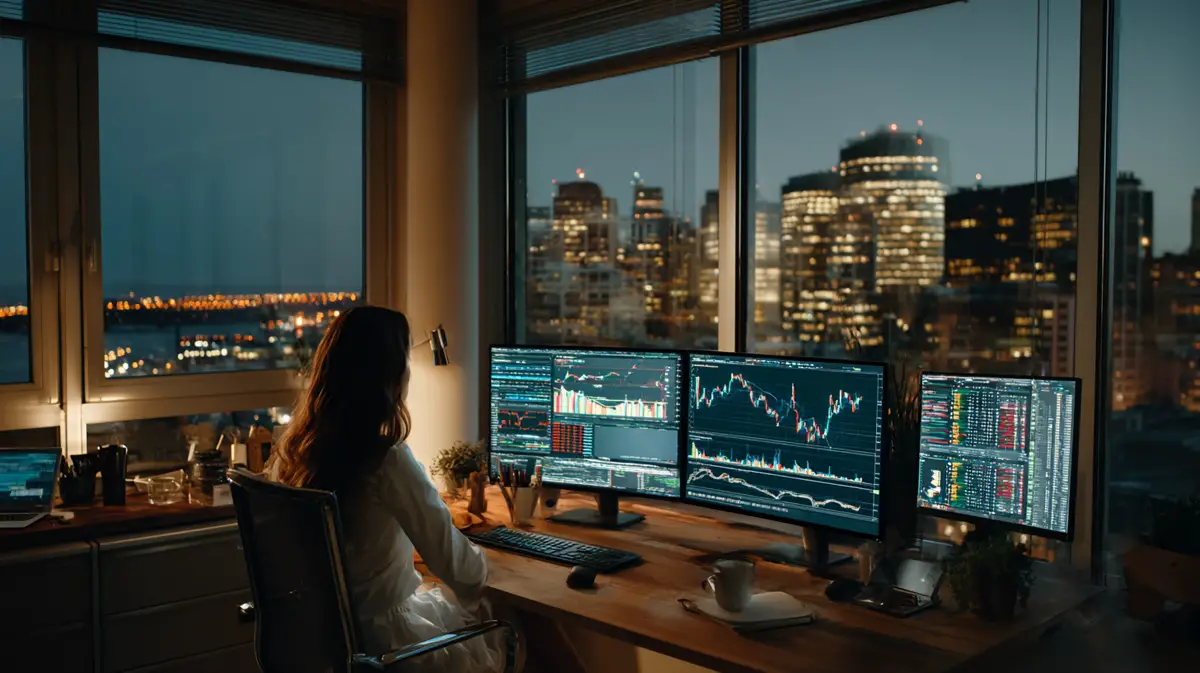How Overnight Trading and Retail Volume Are Redefining Equity Stability

When we think of equity markets in 2025, we tend to focus on open-to-close moves, institutional flow, and macro headlines. But a subtler phenomenon is reshaping volatility, liquidity, and opportunity: the growing dominance of overnight trading and heightened retail activity.
The edge now lies in understanding how and why overnight and retail volumes are driving equity behavior. Let’s explore how these trends are manifesting, why they matter, and how investors who lean into them stand to gain.
The Changing Landscape of Equity Volume
Equity trading has shifted dramatically in recent years, and understanding how to pick a stock now requires more than just looking at company fundamentals. According to Cboe and Nasdaq data:
● Overnight trading volume now represents up to 25 percent of total daily volume, compared to under 10 percent in 2018
● Retail investors account for roughly 20–25 percent of overall market volume, compared to 12 percent just three years ago
● The proportion of overnight VWAP-based executions has nearly doubled since 2021
These statistics show that two formerly peripheral segments of market flow have become central to price discovery, liquidity formation, and volatility generation.
Understanding Overnight Trading Risks and Rewards
Overnight trading is defined here as after-hours and pre-open execution windows — used to be the domain of institutions reacting to geopolitical events or earnings announcements. Now, retail traders and AI-driven systems are equally active, and often faster.
Why does this matter?
● Price gaps between the close and the open now average nearly 0.7 percent in the S&P 500, compared to 0.3 percent pre-2020. That’s a double impact for overnight holders
● A spike in after-hours volume ahead of major reports correlates with a 50 percent increase in first-hour meta-volatility on average
● Algorithms now target liquidity inefficiencies in the overnight session, amplifying both spikes and dampers
For traders holding positions overnight, these patterns mean you can no longer treat after-hours risk like ‘sleep risk’. It has real economic consequences.
Retail Volume: More Participation, More Instability
Retail flow has matured from impulse trading to structured strategy. In 2025, platforms like Robinhood, eToro, and TradeStation report the following:
● Retail volume doubled during the pandemic and has remained elevated at 20–25 percent of total daily equities flow
● Over 60 percent of retail trades occur near open and close, often driven by algorithmic or scheduled strategies
● Retail volatility premium — the extra price swing driven by rapid retail entries and exits — is averaging 0.15–0.3 percent intraday in mid-cap stocks
That creates an opportunity and a risk. Stocks with high retail ownership now see sharper intraday reversals, wider opening gaps, and higher relative volume on headlines.
Why This Dynamic Is Redefining Stability
The combined effect of overnight flows and retail surges leads to:
1. Sharper volatility clusters at session boundaries, markets aren’t quiet outside normal hours
2. Greater disconnect between pre-market signals and intra-day momentum
3. Heightened liquidity imbalance during regular trading hours triggered by overnight delta
4. New opportunity for structured risk-taking, but only if you trade with discipline
Ignoring these shifts is no longer optional. They define market sentiment, skew patterns, and change correlation assumptions across sectors.
Breaking It Down: Three Tactical Takeaways
Here are a few areas where understanding this shift helps advanced investors:
● Session-driven strategy segmentation: Professionals now build “overnight setups” tied to earnings or macro events and separate “intraday execution” models built on post-open flow. Each has its own risk model.
● Retail flow as a signal, not just noise: A spike in pre-market retail volume can act as a useful proxy for crowd sentiment, catch increased delta exposure, and guide trading bias — but only when confirmed by liquidity and structure.
● Volatility curves shape risk sizing: When overnight and daily realized volatility diverges, top traders adjust sizing dynamically. Holding into the open when overnight vol is elevated can trigger outsized losses.
How Professionals Are Adapting
Training wheels are gone. Professionals are building order execution and sizing algorithms that adapt based on real-time flow metrics, such as:
● Overnight volume imbalances (using order flow variance measures)
● Sentiment-weighted retail order stream indicators
● Session-adjusted stop placement (since overnight slippage distorts traditional levels)
● Flow smoothing techniques that neutralize mini flash events
A Real-World Example: Netflix Earnings in April 2025
Netflix reported earnings in the late afternoon Pacific Time on April 23, 2025. In the two hours following release, after-hours volume was 3.2x average, with a 4 percent price gap into the open. Intra-day action featured a sharp fade and reversal in the first hour, which destroyed more than half of the after-hours move.
Traders who structured their positions to fade the open — sizing based on overnight volatility and volume ratio — captured the reversal with tight execution. That kind of opportunity is nearly invisible without session-specific flow analysis.
Bullet Summary: Core Adjustments for Today’s Trader
● Treat session boundaries as full-blown event zones, not afterthoughts
● Size positions based on integrated overnight and retail volatility
● Tag gap/open reversals as trades, not surprises
● Use retail volume as a sentiment filter — not an execution trigger
These are not simple tweaks. They reshape how you allocate capital and manage risk.
Final Thought: Stability Is Redefined by Flow
The equity market of 2025 is not a calm sea. It is a ripple-driven lake whose edges now define its core dynamics. Overnight trading and retail volume aren’t fringe phenomena. They are fundamental forces reshaping liquidity, volatility, and alpha opportunity.
For advanced investors, that means stability is no longer a function of the market in isolation. It is the outcome of how you interpret, and trade, when the market is open, pre-open, or overtaken by crowd spikes.
If you want to navigate 2025 markets with precision, you must trade around whole-session dynamics. Because true stability is not what happens when you ignore extremes. It is what happens when you prepare for them.










